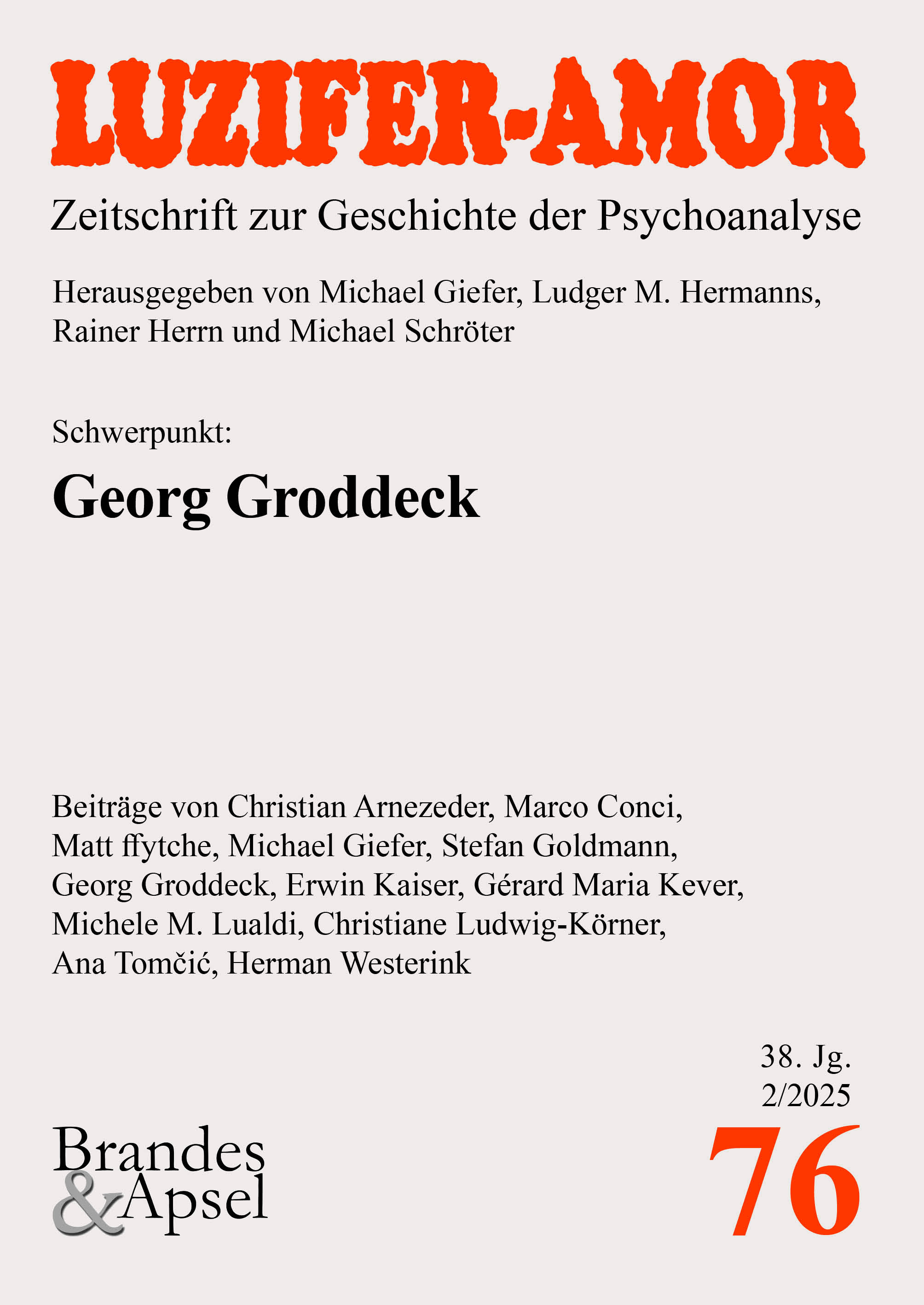Heft 76 ( 38. Jg. 2025): Georg Groddeck

bestellen (Heft oder E-Journal) (Gesamtheft und Einzelbeiträge)
Herman Westerink
Die traumatische Neurose und die biologischen Spekulationen in der Erst- und Zweitfassung von Freuds Jenseits des Lustprinzips (S. 84-98)
Zusammenfassung: Ausgangspunkt dieses Aufsatzes ist die Tatsache, dass Freud Jenseits des Lustprinzips in zwei Phasen schrieb und die Konzepte der Lebens- und Todestriebe erst in der zweiten Fassung des Manuskripts formulierte. Es wird die These vertreten, dass Freud die letztere Theorie einführte, um für ihn inakzeptable Implikationen seiner Argumentation in der ersten Fassung des Textes zu korrigieren. Hier war die traumatische Neurose das Modell für evolutionsbiologische Spekulationen, und spezifische biologische Theorien spielten eine entscheidende Rolle. Das ändert sich in der zweiten Fassung des Textes radikal, vor allem mit der Einführung der »Lebenstriebe«. In den zwei Fassungen des Textes positioniert sich Freud auf unterschiedliche Weise in Debatten der Lebenswissenschaften seiner Zeit, in denen mechanistische und vitalistische Theorien entwickelt werden, um sowohl phylogenetische als auch ontogenetische Veränderung, Entwicklung, Zweckmäßigkeit und Finalität zu denken und erklären.
Summary: Traumatic Neurosis and bio-analytical speculation in Freud’s Beyond the Pleasure Principle. The starting point of this article is the fact that Freud wrote Beyond the Pleasure Principle in two stages, and only introduced the concepts of life drives and death drives in the second version of the manuscript. This raises the question of how the two versions relate to each other. This article brings forward the thesis that Freud introduced the new drive theory to correct what he saw as unacceptable implications of his arguments in the first chapters of the text. In the first version, traumatic neuroses are the model for evolutionary-biological speculations. In that context specific biological theories play a crucial role. That changes radically in the second version of the text, notably with the introduction of the ‘life drives’. In the two versions of the text, Freud positions himself in different ways in the debates within the life sciences of his time in which mechanistic and vitalistic theories were developed to explain both phylogenetic and ontogenetic change, development, efficiency and finality.
